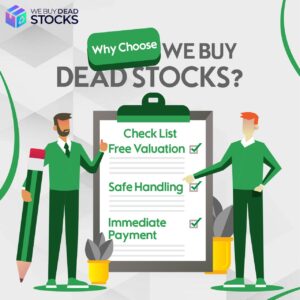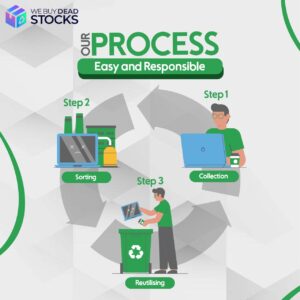There are a bunch of reasons why you could have extra stock. Perhaps you misjudged how many items you’d sell and presently have an excess.
Maybe the retailer’s automated forecasting and allocation system weren’t fine-tuned, resulting in pockets of inventory in the store chain. Whatever the cause is, the result is the same: excess stock.
These things cost you cash to deliver, bundle, transport and get into the retailer. They’re taking up important stock dollars at your retail accomplice and occupying the rack room.
You can reduce excess inventory in the future with better forecasting and retailer allocation; however, on the off chance you’re stuck managing abundance stock now or after the holidays. Or if you have a company and want to know how companies get rid of excess inventory. We recommend you continue reading to learn how to get rid of it.
Disposing of your overloaded stock is tied in with finding a balance between expanding what you can get income-wise and limiting further ventures of your time, cash, and assets. A couple of the ideal ways to eliminate stock from your distribution center currently include: item packaging, limited evaluating, liquidation, and reusing or giving unsold merchandise.
Group It With Another Item
When a specific product isn’t selling, the issue may not come with the actual item. The problem could lie in the way you’re promoting that product. An extraordinary method for reviving your promoting endeavors is to package slow-moving stock with another well-known item you have available.
Packaging is presently a standard technique among online retailers. It permits you to move an enormous stock volume without enduring a gigantic shot on your benefits.
Sell It At a Rebate
Depending upon the justification for why you have an abundance of items, you can offer weighty limits to sell out of these stale things ideally. As the products are not damaged or ruined, you should feel sure selling them at a limited value (which is logically better than not selling them by any means). You can begin with something little, such as 25% off the thing, and afterward, keep consolidating further limits (or present blaze deals) as you see fit.
Offer It As An Unconditional Gift
They offer an overabundance of stock as an unconditional gift function admirably with minimal expense stock. For example, assuming you have a full item that is hard to sell, you can involve it as a giveaway to boost customers. This is useful for pursuing their mailing rundown or incrementing their shopping basket esteem. They’ll ‘procure’ a free thing if they spend more than $75. Using this approach will not produce a lot of income. It will further develop consumer loyalty and lessen the stock levels in your distribution center.
Exchange It
When you exchange your abundance of stock, you hope to dispose of it. Also, at times, that may be the ideal decision for you. Fundamentally, a stock outlet will purchase anything you have at an arranged cost. Remember, some of these organizations like to ‘single out things, and they will generally buy your stock at much lower prices. While you won’t see any benefits from liquidation, you will let loose significant space and capital.
Reuse It
Instead of just tossing your stock into a landfill someplace, you can check if your things can be reused. Most regions have their own reusing projects, or you can search for administrations that will get recyclable merchandise for you. There’s a strong opportunity for somebody (or some organization) in your space to spend significant time in out-of-date stock reusing. These can stack up your overabundance of products and track down a legitimate home or elective use for these things.
Give it away
Joint efforts between independent companies and philanthropic associations can benefit the two players. When you choose to give an overabundance of stock to neighborhood noble causes, schools, or places of love, you can procure a government personal expense derivation. Furthermore, delivering items for a good reason is an extraordinary method for supporting your image by engaging in social obligation and rewarding your local area.
Utilize the Information!
At long last, you ought to screen your investigation and stock frameworks all year. Use conditions like stock turnover to perceive how rapidly your items are selling. Dive into the special product offerings to realize what is performing better than others. This should illuminate your determination and assist you with drawing nearer to shopper interest.
Remember that if your stock isn’t selling, it may not simply be an absence of customer interest. Your inventory could be missing, lost in the reserved alcove, or not being counted precisely at the retail location. Perform actual counts and contrast them with your retailer’s stock framework. Check to ensure that each framework and interaction is following your things accurately.
Why Excess Inventory Is Bad?
Abundance stock loses the value it has the more it’s kept in stock since the interest for that item leisurely decays, and it removes rack space from new things. All in all, the more you hold an item, the less expensive it becomes. Most organizations sell overloaded things at costs underneath what they pay, bringing down their net revenues incredibly.
Overloading is regularly the consequence of the overabundance of stock, wherein an organization buys more items than it has the option to sell, even though overloading can have various causes, from misinterpreting client interest to making up for store network issues to dread stockouts. Essentially, these worries can be alleviated by carefully examining your current stock.
Conclusion
Excess stock could, without a doubt, turn into a monetary issue. Luckily, retailers can use systems and answers to forestalling excessive inventory and resolve stock administration issues. Here and there, retailers can, in any case, recover a portion of their lost capital.
Without much of a stretch, organizations can keep away from an overload of stock when they utilize strong stock administration programming to follow a stock market interest. The product will direct stock levels so organizations and advertisers can pick which methodologies will attempt to avoid excess stock and arrive at target net revenues.
We hope our blog answers your very question about how companies get rid of excess inventory, hope to see you again soon.





